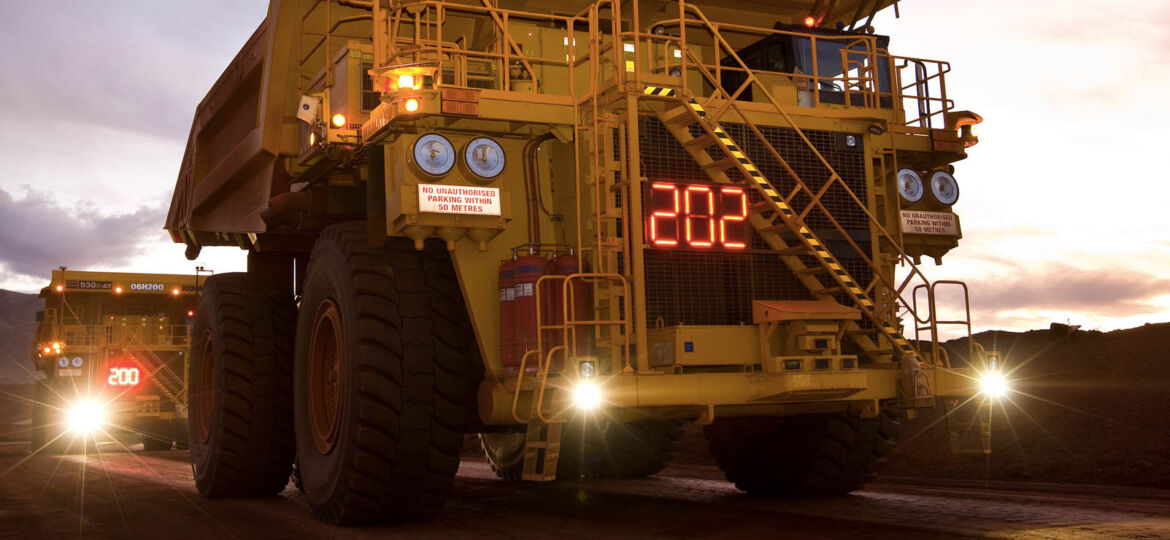
WHY THIS MATTERS IN BRIEF
Automation is taking the world’s mining operations by storm, and it will only be a matter of time before the only humans are the ones servicing the machines.
Every one of the giant Komatsu 250 ton trucks is the size of a two story family home and not a single one has a driver or anyone else on board. They became self-driving last year.
Mining company Rio Tinto now has 75 of these titans hauling iron ore 24 hours a day at four mines in Australia’s north west, and at its West Angelas mine, the vehicles now work alongside robotic rock drilling rigs. The video below shows a prototype of the new vehicles from last year and the guy with the control box – well, he’s there to slam the brakes on if the new autonomous truck goes haywire. Which it didn’t…
The autonomous trucks are even re-fuelled using automated re-fuelling rigs like the one below:
The company is also upgrading the locomotives that haul ore hundreds of miles to port, and, again, the upgrades will allow the trains to drive themselves, and be loaded and unloaded automatically.
So far there’s not a person in sight.
Rio Tinto intends to expand its automated operations throughout Australia, and next it’s got its eyes set on replacing the human miners themselves – those brave souls who risk life and limb to extract precious ores and minerals from seams miles below the Earth’s surface.
The rising capabilities and falling costs of new, robotics technologies are allowing mining and oil companies alike, finally, to reimagine the dirty, dangerous business of getting resources out of the ground.
Meanwhile BHP Billiton, the world’s largest mining company, who recently put part of their supply chain on the blockchain, another emerging technology that’s helping automate back office and front office tasks, is also deploying driverless trucks and drills in its iron ore mines in Australia. And Suncor, Canada’s largest oil company, has begun testing driverless trucks on oil sands fields in Alberta.
“In the last couple of years we can just do so much more in terms of the sophistication of automation,” says Herman, director of the National Robotics Engineering Center at Carnegie Mellon University, which is home to some of the world’s top autonomous vehicle experts.
The center helped Caterpillar develop its autonomous haul truck, now mining company Fortescue Metals Group is putting them to work in its own iron ore mines.
Herman says the technology can be deployed sooner for mining than other applications, such as transportation on public roads.
“It’s easier to deploy because these environments are already highly regulated,” he says.
Rio Tinto’s trucks, for example, find their way around using precision GPS and look out for obstacles using radar and lidar.
Rob Atkinson, who leads productivity efforts at Rio Tinto, says the fleet and other automation projects are already paying off. The company’s driverless trucks have proven to be roughly 15 percent cheaper to run than vehicles with humans behind the wheel, he says – a significant saving since haulage is by far a mine’s largest operational cost.
“We’re going to continue as aggressively as possible down this path,” he says.
Trucks that drive themselves can spend more time working because software doesn’t need to stop for shift changes or bathroom breaks. They’re also more predictable in how they do things like pull up for loading.
“All those places where you could lose a few seconds or minutes by not being consistent add up,” says Atkinson, “they also improve safety.”
The driverless locomotives, due to be tested extensively next year and fully deployed by 2018, are expected to bring similar benefits. Atkinson also anticipates savings on train maintenance, because software can be more predictable and gentle than any human in how it uses brakes and other controls. Diggers and bulldozers could be next to be automated.
Meanwhile, Herman expects all large mining companies to widen their use of automation significantly in the coming years as robotics continues to improve, and the recent, sizeable investments by auto and tech companies in driverless cars will help accelerate improvements in the price and performance of the sensors, software, and other technologies needed.
Herman says many mining companies are well placed to expand automation rapidly, because they have already invested in centralised control systems that use software to co-ordinate and monitor their equipment.
Rio Tinto, for example, gave the job of overseeing its autonomous trucks to staff at the company’s control center in Perth, 750 miles to the south. The center already plans train movements and in the future will shift from sending orders to people to directing driverless locomotives.
Atkinson of Rio Tinto acknowledges that just like earlier technologies that boosted efficiency, those changes will reduce staffing levels – even if some new jobs are created servicing and managing autonomous machines.
“It’s something that we’ve got to carefully manage, but it’s a reality of modern day life,” he says, “we will remain a very significant employer.”
As the Sun continues to set over the Australian horizon increasingly it looks like more and more mining companies will be sun setting jobs, replacing them with autonomous systems that never eat, sleep – or stop, and it’s a story that’s being repeated in every corner of every industry.

















[…] Source link […]
[…] of the world’s largest mining companies, who are both on an automation tear, albeit with their mining operations, are both looking to adopt autonomous ships to transport millions of tons of iron ore, copper, and […]
[…] scene either, having already replaced many of their mining trucks with automated versions. According to Rob Atkinson, who heads productivity efforts at Rio Tinto, the company’s driverless trucks have proven to be […]